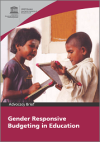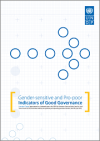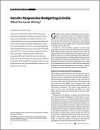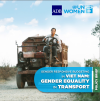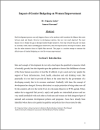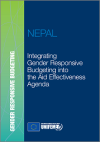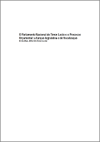FOUND 22
This advocacy brief published in 2010 by UNESCO Asia and Pacific Regional Bureau for Education was written by Reina Ichii.
This paper was prepared as a background to the UNDP Oslo Governance Centre and Indian Council for Social Science Research (ICSSR) International workshop on engendering and empowering governance indicators, New Delhi, April 2005.
The article examines the two main strategies adopted by the Government of India for institutionalizing gender responsive budgeting to highlight what has gone wrong and what needs to be fixed in order to achieve better outcomes for women.
Transport is one of the most important aspects of national infrastructure and a key to gender equality. Women’s opportunities to access paid work are reduced when there is poor investment in gender
Well-being gender budgeting (WBGB) experiences use a multidimensional approach for planning and budgeting combining the Capability Approach along with gender responsive budgeting.
This paper is an attempt to measure the effectiveness of Gender Budgeting as a tool for women empowerment. In recent years, Gender Budget Initiatives have emerged as an effective way to bridge gender gaps.
This report presents the findings of a country review carried out in India by Benita Sharma and Aruna Kanchi under the programme "Integrating gender responsive budgeting into the aid effectiveness agenda" launched by UNIFEM and the European Commission (EC) in 2008.The report discusses the use of and
This report presents the findings of a country review carried out in Nepal by Dr. Meena Acharya Sahavagi under the programme"Integrating gender responsive budgeting into the aid effectiveness agenda" launched by UNIFEM and the European Commission (EC) in 2008.
